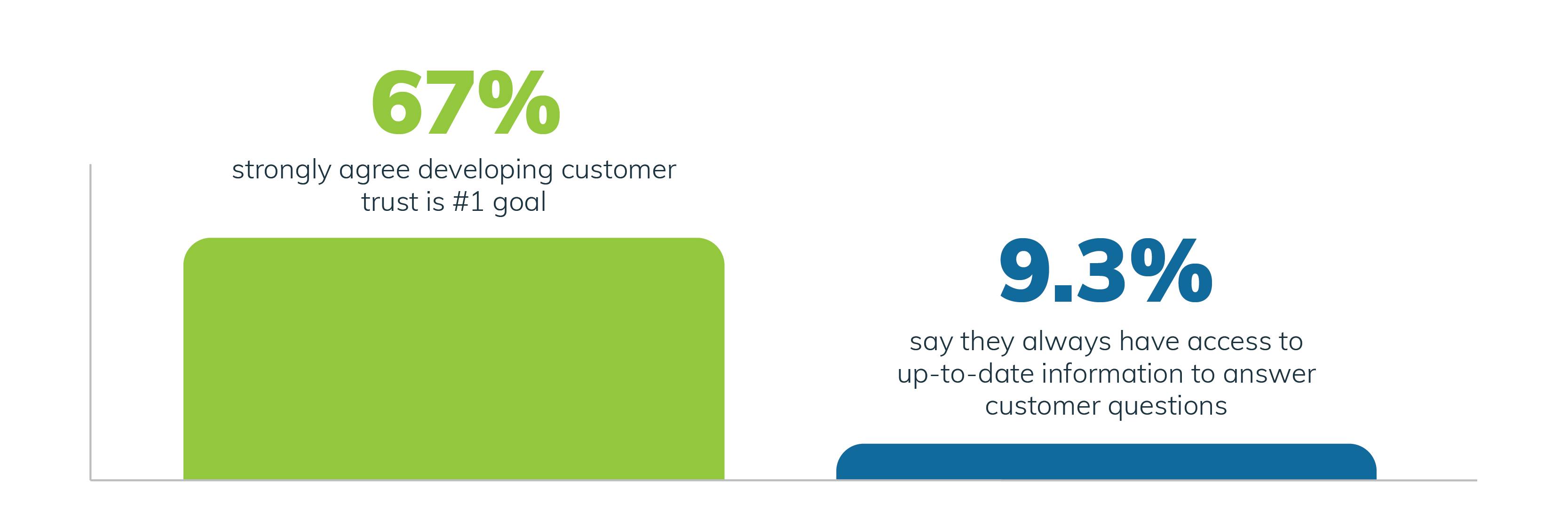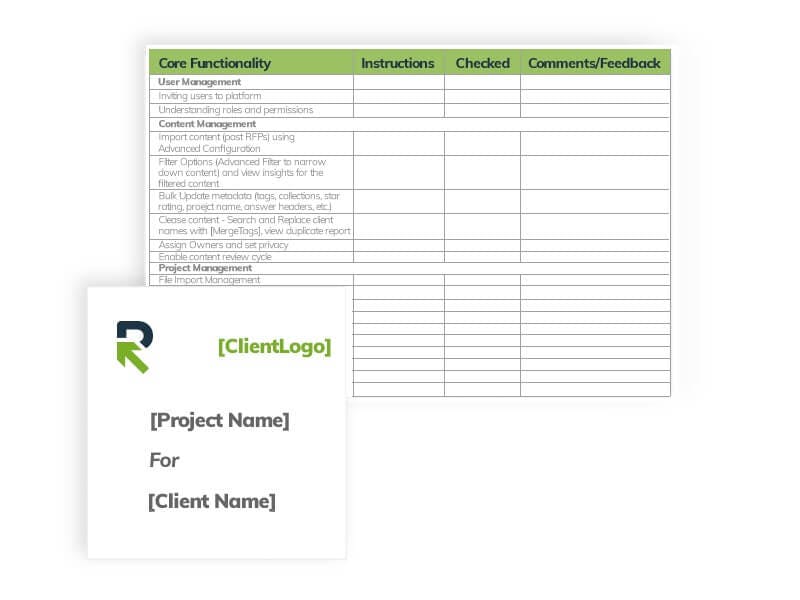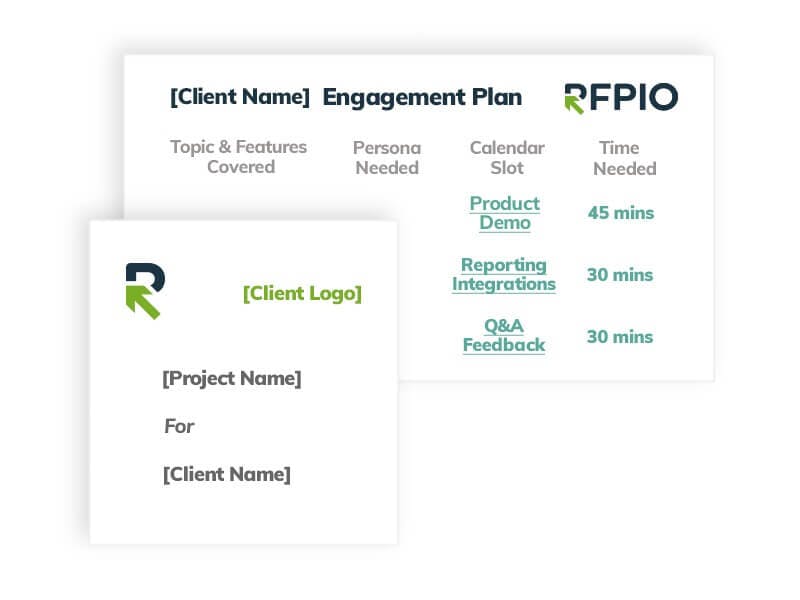If you’re reading this, then you’ve already bought into the importance of customer experience in your sales cycle. A simple product backed by great customer experience will always have more conversions than a great product with a terrible customer experience. Many of the world’s leading enterprises concur. Data points that support customer experience are plentiful, indeed. The one that stands out to me is from PWC’s Future of Customer Experience report: 73% of customers consider experience an important factor in their purchasing decision.
Obviously, pre-sales is not solely responsible for good customer experience — that’s an organizational responsibility for every department, from legal and security to executive and marketing, to product development and engineering. Whether your pre-sales function is its own entity or a responsibility tacked on to product management or sales or technical support, it can be solely responsible for strengthening (or damaging) trust with prospects and customers.
The pre-sales process: A quick level-set
What is pre-sales? The short answer is.. It’s complicated. Most organizations differ in how they define pre-sales and the pre-sales process. Often, the definition is intentionally vague to give teams the flexibility necessary to respond most effectively to a customer.
For the sake of this article, I’ll say the pre-sales process takes place from initial contact to demo or proof of concept (POC) presentation. From here, pre-sales hands off the relationship to the appropriate sales entity, such as a business development representative, a sales development representative, or even an account executive.
The overarching key to customer experience success resides in every hand-off. Prior to presenting a recent webinar, I surveyed registered participants—most of whom were pre-sales professionals. Only 50% were confident that commitments made in pre-sales get fulfilled.
Only 50% of pre-sales professionals are confident their commitments made in pre-sales get fulfilled.
The only way to make sure details don’t fall through the cracks, or that promises made by one department aren’t met by another, or that any other pitfalls don’t derail the overall customer experience is through process. Process in a scaleup company is like a guitar string. If it is too tight, the quality of music is not great, and if it is too loose you cannot make any music at all.
I apply an 80/20 rule to my pre-sales model. Basically, it means that 80% of the rules of engagement between teams during pre-sales are streamlined. The remaining 20% gives teams wiggle room to personalize customer buying journeys and react to exceptions pertaining to customer needs.
Keep this in mind as you consider my model for creating trust during the pre-sales process.
Step 1: Collect and analyze data
Remember that from the customer perspective, their experience needs to be seamless. They expect consistency across channels–but different internal owners of parts of that experience can cause inconsistency. Take a longitudinal view of the total experience to spot inconsistency.
Data-driven insight is just as valuable in pre-sales as elsewhere in the organization. It’s just that at the pre-sales stage, much of the customer interaction involves gathering data. In my webinar survey, 33.3% of participants agreed that access to customer feedback data that allows them to measure customer experience would be helpful. And only 9.3% said they always have access to up-to-date information to answer customer questions. Easier access to data about prospects and your product or solution will always help pre-sales stay a step ahead during the evaluation process.

Research the company, business model, values, and funding (if applicable)
Examine any existing CRM notes or call recordings all the way back to the first touchpoint. The first discussion should be as consistent as the most recent one. Get in sync by going through any previous activities and speaking to personnel who have been involved. Best practices say to automate this as much as possible through your CRM and other sales enablement tools.
Summarize and confirm findings-to-date during discovery
Get on the same page with prospects first, and then ask them if you have missed anything. Acknowledge their effort in the buying process so far. This is the first step in establishing trust and opens the door for a prospect to reveal new details because they view you as their advisor in the buying process.
Next, ask open-ended questions to unearth details you can use to personalize your demo or POC engagement with the prospect. This can range from getting their core triggerpoint to identifying the details of their standard buying process to gaining insight into high-value stakeholders. Document all the discovery details.
Analyze data to inform your personalized engagement plan
You now have two critical data sets to help personalize your engagement and take the customer experience to the next level.
- Research Data: Company, industry segment, persona role, timezone, culture, etc.
- Sales & Discovery Data: Tone, intent, urgency, problems, specific features, success criteria, possible effort into evaluation, etc.
Evaluate all of this data to develop a personalized engagement plan for each prospect.

Step 2: Personalize engagement
How does a touring stand-up comedian win over her audience in every new city by pointing out their local cultural idiosyncrasies? Carefully, respectfully, and by setting the right tone. In essence, this is what a pre-sales professional has to do: Point out what in the prospect’s process is not working to find the true selling opportunities.
Build your ‘Persona 360’
So far, you’ve gathered intel on the prospect company and one or a few key individuals who have been involved in product evaluation to this point. Be transparent about the plan and share it with the prospect. For the demo/POC, expect additional stakeholders and testers to join the process.
Use the initial discovery call and LinkedIn to find out more about these new additions:
Fill out your Persona 360, which is a combination of the roles, work locations, industry segments, cultures, time zones, ages (estimated, by Generation X, Y, Z, etc.) and more of the entire evaluation team.
A day or so before the demo, resend the personalized engagement plan to update expectations. Be sure to mention new members by name and ask them if they would like to see something specific in the demo/POC.
Grow a library of demo/POC models
Always maintain a variety of demo/POC models. Match the most relevant version to the audience based on your Persona 360, weighting it for those who you deem to have the greatest influence in decision-making. Consult sales when you finalize your demo model. Each model may differ based on talktrack, flow, order of features shown, and time allocated to specific sections.
The Persona 360 should also give you insights into optimizing the structure and timing of your demo/POC. You can personalize the demo/POC with prospect’s problem statements agreed upon during discovery and emphasize how your product’s features help them solve those problems. Educate the new audience without surprising the existing audience to further build trust.
Create personalized success criteria templates

After the first demo with the majority of the evaluators from the prospect’s side, send them a success criteria checklist to illustrate how your product or solution directly addresses some of their key pain points. This checklist will also give the prospect an easy reference to compare how your offering measures up to a competitor’s.
The more activity around this checklist the better. It’s a strong signal of their intent to proceed further with the evaluation or even to purchase. It’s not a mandatory touchpoint. If the prospect already has a standard process for evaluation, respect that and only suggest best practices as a trusted advisor.
Step 3: Prepare for hand-off
When we board a bus or a train, we trust the vehicle will take us to our destination because:
- The journey is short.
- The route (process) and destination (value) are defined.
Length of the buying journey varies according to product and industry. Customers are more likely to notice when the journey is too long or arduous than they are to notice that it’s too short. In SaaS, the higher the price point, the greater the customer expectation that they’ll have ample opportunity to demo and evaluate if it’s the right fit. No matter how long the buying journey is in your customer experience, always make room to deliver incremental value.
A feedback call is a mandatory checkpoint after the initial demo/POC to determine where you stand on the overall evaluation. On the feedback call, be ready to review your account handbook, which covers relationship details from discovery, Persona 360, user journey, feature wishlist, and information about post sales implementation and support.
The account handbook documents any business case you can build with the prospect to help advance evaluation to purchase. It also shows the prospect everything that’s been accomplished so far on their buying journey and gives the impression that you’re ready to proceed to the next step. Perhaps most importantly, the account handbook can be used as a hand-off document to the post sales team to ensure a seamless transition for the customer.
If you want more details...
Check out the webinar I presented on the importance of pre-sales in providing a positive customer experience. You can learn more results of the participant survey (very enlightening) and access some of the nitty gritty details I didn’t have space for in this article. It’s especially valuable if you’re in B2B SaaS because I spend a lot of time discussing how to deal with feature requests throughout the customer experience.

